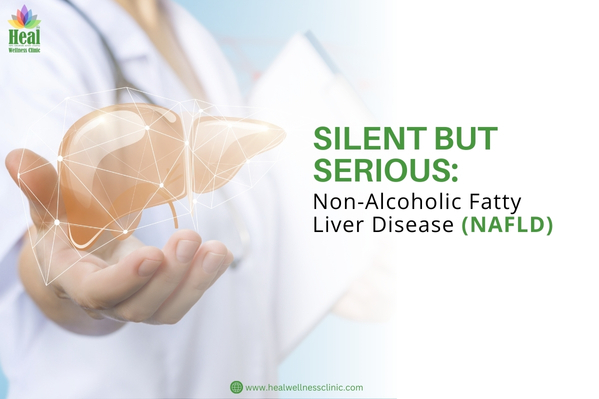
Fatty liver disease is often associated with excessive alcohol consumption, but an equally concerning and more prevalent form—Non-Alcoholic Fatty Liver Disease (NAFLD)—affects millions of people worldwide who do not consume alcohol. This condition occurs when fat builds up in the liver without the influence of alcohol and is often linked to poor diet, sedentary lifestyle, obesity, and other metabolic issues such as type 2 diabetes.
Understanding NAFLD
NAFLD is one of the most common liver conditions globally. It develops when more than 5–10% of the liver’s weight is made up of fat. While it is often silent in its early stages, if left unchecked, it can progress to non-alcoholic steatohepatitis (NASH), fibrosis, cirrhosis, and even liver cancer.
Common Symptoms of NAFLD
In many cases, NAFLD shows no noticeable symptoms until it has progressed significantly. However, some early signs you should watch out for include:
- Persistent fatigue and weakness
- Mild pain or discomfort in the upper right abdomen
- Unexplained weight gain, especially around the midsection
- Difficulty concentrating or “brain fog”
If you notice these symptoms, consult your doctor for a proper diagnosis, which usually involves a combination of blood tests, ultrasounds, and sometimes liver biopsies.
Causes and Risk Factors
While alcohol is not a factor in NAFLD, several other lifestyle and health conditions can trigger it, such as:
- Obesity and high BMI
- Poor dietary habits (high sugar and processed food intake)
- Sedentary lifestyle
- Type 2 diabetes and insulin resistance
- High cholesterol and triglycerides
How to Reverse NAFLD Naturally
The good news is that NAFLD is reversible in its early stages, especially when caused by lifestyle factors. By making key changes in diet, exercise, and overall health habits, you can reduce liver fat and prevent long-term damage.
1. Dietary Changes: Healing from the Kitchen
One of the most powerful tools for reversing NAFLD is food. Here are some dietary tips:
- Choose homemade meals: Preparing your own food helps control the quality and quantity of fats, sugars, and sodium.
- Reduce refined sugar intake: Minimize consumption of sweets, sugary beverages, and processed snacks.
- Incorporate healthy fats: Use olive oil, avocado, nuts, and seeds instead of fried or trans-fat-heavy foods.
- Eat more fiber: Include fresh fruits, vegetables, and whole grains to improve digestion and support liver health.
- Go for lean proteins: Fish, skinless chicken, lentils, and beans help repair and maintain healthy tissues.
2. Exercise: Move to Heal
Physical activity is essential for burning excess fat and improving liver function. You don’t need a gym membership—just consistent movement. Here are some simple exercises:
- Walking: A 30-minute brisk walk daily can make a significant difference.
- Yoga: Certain poses like Bhujangasana (Cobra Pose) and Dhanurasana (Bow Pose) help stimulate liver function.
- Strength training: Light resistance workouts 2–3 times a week can improve metabolism.
- Stretching: Keeps muscles active and improves blood circulation.
3. Lifestyle Modifications
- Stay hydrated: Drink at least 2–3 liters of water daily to help flush out toxins.
- Manage stress: Chronic stress can affect digestion, metabolism, and overall liver health. Meditation and deep breathing can help.
- Get quality sleep: Poor sleep affects insulin sensitivity and liver recovery.
Final Thoughts
Non-Alcoholic Fatty Liver Disease is a growing concern, especially in people who believe they are not at risk because they avoid alcohol. The truth is, your liver health is closely tied to your daily habits—what you eat, how much you move, and how well you manage your overall wellness.
If you suspect NAFLD or are at risk due to lifestyle factors, now is the best time to make changes. Small steps—like eating home-cooked meals, incorporating simple exercises, and reducing sugar—can go a long way in healing your liver.
Your liver works hard every day to keep you healthy. Give it the care it deserves. Reach out to the nearest Heal Wellness Clinic.